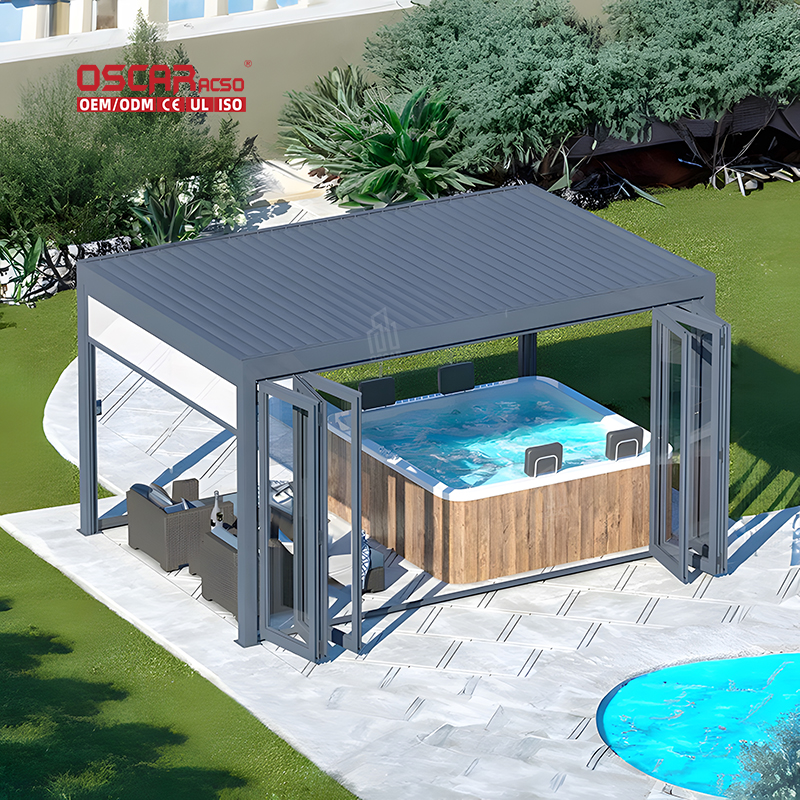Pergola vs Cabana, Transform Your Outdoor Space with the Right Choice
🌞 Introduction to Outdoor StructuresEver wondered how to elevate your backyard into a luxury retreat? The choice between...
🌞 Introduction to Outdoor Structures
Ever wondered how to elevate your backyard into a luxury retreat? The choice between a pérgola and a cabana can make or break your outdoor experience! While both enhance outdoor living, they serve distinct purposes. A pergola typically features an open-roof design with cross-beams for partial shade, ideal for defining spaces like pathways or seating areas. In contrast, a cabana is a more enclosed structure, often resembling a small cabin with walls, used for privacy near pools or beaches. As someone who’s designed numerous outdoor projects, I believe understanding these differences prevents costly mistakes and aligns with your lifestyle needs. What’s the core question? Let’s break it down: Why do these structures matter?They dictate comfort, functionality, and aesthetic appeal in your personal oasis.

🏗️ Defining Pergola and Cabana
What exactly is a pergola? It’s a freestanding or attached framework with slatted roofs, allowing sunlight to filter through while supporting climbing plants like vines 🌿. Historically, pergolas originated in Italian gardens for walkways, but modern versions focus on creating shaded lounging zones without full enclosure. Now, what about a cabana? Think of it as a miniature shelter with walls—sometimes partial or retractable—offering complete privacy and storage. For instance, cabanas are staples at resorts for changing rooms or poolside relaxation . From my perspective, pergolas excel in open-air socializing, whereas cabanas prioritize secluded comfort.
- •
Pergola key traits: Open design, promotes airflow, enhances garden integration.

- •
Cabana key traits: Enclosed space, provides weather protection, ideal for utilities.
🔍 Key Differences Unveiled
How do they compare in practice? Let’s explore four critical areas:
- 1.
Structural Design: Pergolas boast airy frameworks with pillars and beams, encouraging natural light. Cabanas, however, feature solid or fabric walls for full enclosure—imagine a cozy nook versus a breezy arcade.
- 2.
Functionality: Pergolas are perfect for dining or entertaining under the sky, while cabanas serve as private retreats for storage or napping. I’ve seen clients use pergolas for wedding arches and cabanas as outdoor bars!
- 3.
Customization: Pergolas allow creative additions like curtains or lights; cabanas often include built-in seating or electricity. Pro tip: Pergolas cost less to install but require more maintenance against elements.
- 4.
Location Suitability: Pergolas thrive in gardens or patios; cabanas shine near water sources. Ask yourself: Need sun control or total seclusion?That decides your pick.

💡 Personal Insights and Practical Scenarios
Based on my experience, pergolas suit active households that love grilling or gardening, as they foster interaction with nature. Cabanas, though, are luxury upgrades for privacy seekers—like adding a mini-guestroom outdoors. One common mistake? Overlooking climate: pergolas struggle in heavy rain, while cabanas can feel cramped if undersized. Game-changer idea: Hybrid designs that merge pergola roofs with cabana walls offer the best of both worlds! Did you know? Industry data shows pergolas increase property value by up to 10%, whereas cabanas can boost rental appeal by 15% in vacation homes.
.jpg)
🌍 Environmental and Aesthetic Impact
Beyond functionality, pergolas promote sustainability by reducing heat islands with plant cover. Cabanas, if built with recycled materials, minimize waste. Aesthetically, pergolas add vertical interest to landscapes, while cabanas provide structured focal points. My advice: Choose materials wisely—wood pergolas age gracefully, but vinyl cabanas resist moisture better.
.jpg)

.jpg)
